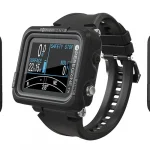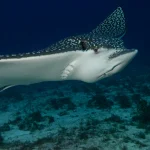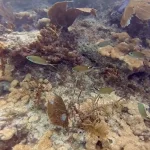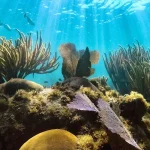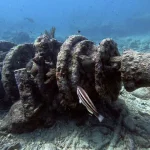Table of Contents
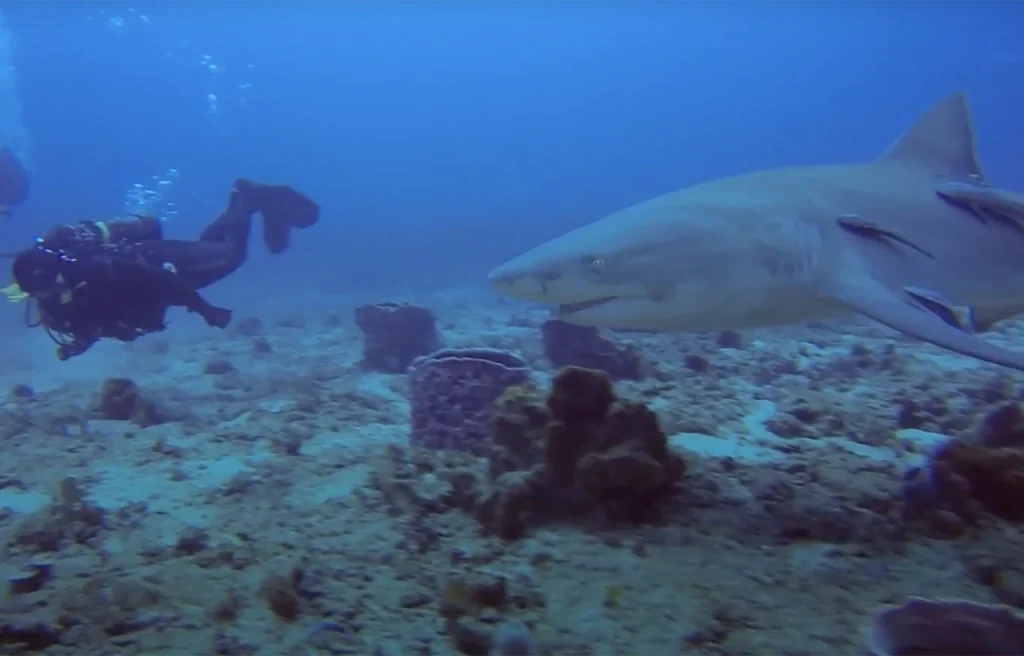
The site is known for its “aquarium-like” environments, with mini-ecosystems that host approximately 60 different marine species. The low-profile ledge and broken reef structure create perfect habitats for these diverse marine creatures to thrive.
Article at a Glance
- Location: Area 29 is situated off the coast of Jupiter, Florida, known for its vibrant marine ecosystems and unique underwater topography.
- Depth: The dive site typically ranges from 80 to 90 feet, making it suitable for advanced divers.
- Visibility: Divers can expect generally excellent visibility, often referred to as “Jupiter Blue,” enhancing the underwater experience.
- Diving Type: The site primarily involves drift diving, requiring proficiency in managing currents and buoyancy.
- Marine Life: Area 29 is home to a diverse array of marine species, including tropical fish, Goliath groupers, and seasonal sightings of Lemon sharks.
- Best Time to Dive: The optimal diving season is from January to April, when visibility is high and Lemon sharks are commonly seen.
- Experience Level: Recommended for advanced divers; not suitable for beginners due to depth and drift diving conditions.
Area 29 Jupiter
Area 29 is a popular dive site located off the coast of Jupiter, Florida, known for its excellent visibility and diverse marine life. This deep reef site offers an exciting experience for both sightseers and hunters alike.
Dive Site Characteristics
Area 29 is one of the deeper dive sites in the Jupiter area, with depths ranging from 80 to 90 feet. The site features a low-profile ledge that is broken up into a series of “aquariums” as divers drift northward. This unique topography creates mini-environments that are home to a wide variety of marine life.
Diving Conditions
Area 29 is known for its consistently good visibility, making it a reliable choice for dive operators when inshore sites have poor conditions. The site is often referred to as “Old Reliable” due to its dependable diving conditions.
Dive Techniques
Diving in Jupiter, including Area 29, typically involves drift diving techniques. Divers should be prepared for swift currents and be proficient in live boat diving and the use of surface marker buoys (SMBs).
Best Time to Visit
While Area 29 can be dived year-round, the winter months (January and February) may offer opportunities to see additional species like Lemon Sharks, which aggregate in the Jupiter area during this time.
What Marine Life Can I Expect To See?
Fish Species
- Blue, Queen, French, and Gray Angelfish
- Tomtates and various grunt species
- Squirrelfish hiding in small nooks
- Goatfish stirring up sand
- Barracuda
- Yellowhead jawfish
- Southern rays
- Atlantic spadefish
- Yellowtail snapper
- Blennies and gobies
Large Marine Creatures
- Loggerhead turtles
- Hawksbill turtles
- Cobia
- Gag and Black groupers (in season)
- Southern rays
- Occasional Goliath grouper
Winter Highlights
During winter months (January and February), divers can particularly look forward to seeing Lemon Sharks, which aggregate in the Jupiter area during this time.
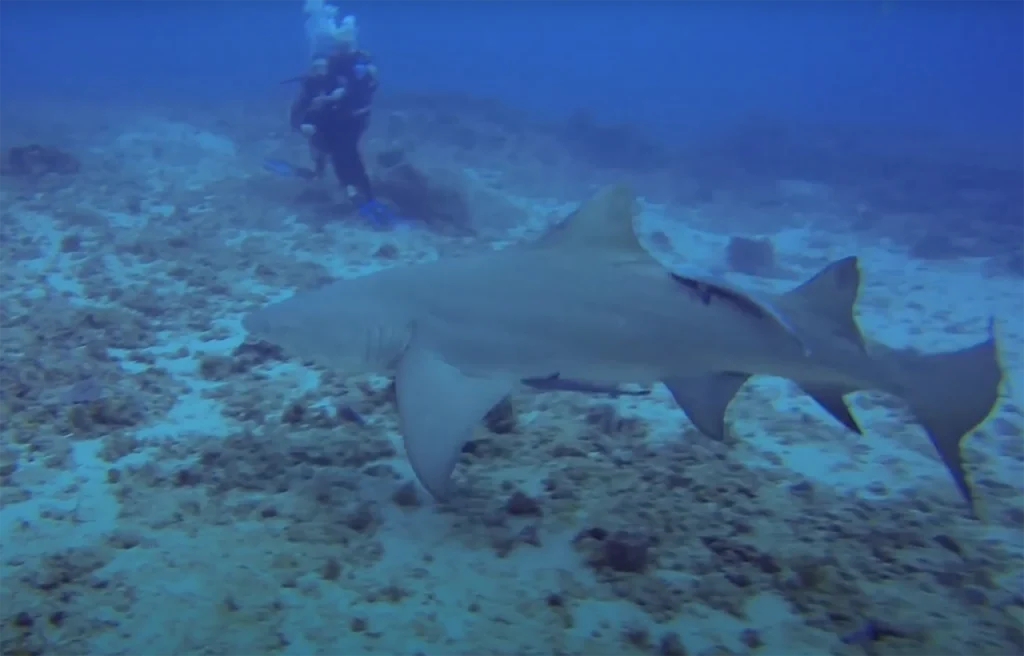
What Do Divers Say About This Site?
General Impressions
- Diverse Marine Life: Many divers report seeing a wide variety of marine species, including sharks, Goliath groupers, turtles, and vibrant reef fish. One diver noted spotting two Goliath groupers and a shark during their dive, emphasizing the rich biodiversity of the site.
- Visibility and Conditions: Divers appreciate the generally good visibility at Area 29, which enhances the underwater experience. Comments indicate that conditions can vary, but many have enjoyed clear waters with active marine life.
Crew and Service
- Professionalism and Friendliness: Reviews frequently mention the professionalism and friendliness of the dive crews. Divers feel well taken care of, with many praising the crew’s knowledge of the area and their ability to point out interesting marine life. One diver remarked on the crew’s efficiency and helpfulness, particularly for first-time divers.
- Guided Drift Diving: The drift diving experience is often highlighted as a unique aspect of diving in Jupiter. Divers appreciate the freedom to explore while still having guides available to enhance their experience by pointing out hidden marine life.
Recommendations
- Return Visits: Many divers express a desire to return, citing memorable experiences and high-quality service as reasons for their loyalty. One diver mentioned having over 4,000 dives but returning frequently due to the excellent crew and varied dive sites.
- Safety and Comfort: New divers particularly note how safe they felt during their dives, thanks to attentive dive masters who provided guidance and support throughout the experience.
Key Information
| Category | Details |
|---|---|
| Location | Area 29, Jupiter, Florida |
| Depth | 80 to 90 feet |
| Visibility | Generally excellent; often referred to as “Jupiter Blue” |
| Diving Type | Drift diving |
| Marine Life | – Tropical fish (Angelfish, Grunts) |
| – Goliath groupers | |
| – Loggerhead and Hawksbill turtles | |
| – Reef sharks (including Lemon sharks in winter) | |
| Best Time to Dive | January to April (for Lemon sharks and good visibility) |
| Experience Level | Recommended for advanced divers; not suitable for beginners |
| Photography Opportunities | Excellent due to vibrant marine life and clear waters |
| Unique Features | – Mini-environments or “aquariums” |
| – High ledges and unique underwater topography | |
| Safety Considerations | Strong currents; familiarity with drift diving recommended |
Highlights of Diving This Site?
Depth and Accessibility
- Depth Range: Area 29 is a deeper dive site, with depths between 80 to 90 feet, making it suitable for more experienced divers seeking adventure.
- Reliable Conditions: Known as “Old Reliable,” this site is often chosen when inshore sites have poor visibility, ensuring consistent diving experiences.
Marine Life
- Diverse Ecosystem: Divers can expect to see a rich variety of marine life, including:
- Tropical Fish: Species such as Blue, Queen, French, and Gray Angelfish, along with Tomtates and various grunts.
- Larger Creatures: Loggerhead and Hawksbill turtles, Gag and Black groupers (in season), and Southern rays can often be spotted.
- Unique Sightings: The site is known for frequent encounters with reef sharks and the occasional Goliath grouper.
Unique Features
- Aquarium-like Environments: The ledge structure creates mini-environments or “aquariums,” where divers can marvel at the abundance of fish and marine critters.
- Hunting Opportunities: The site is popular among spearfishers due to the presence of game fish like cobia and lobsters found in the blowouts and under coral heads.
Diving Experience
- Drift Diving: The dive typically involves drift diving along the ledge, allowing divers to explore various depths and encounter different marine life.
- Photographic Opportunities: The unique topography and vibrant marine life provide excellent opportunities for underwater photography.
Seasonal Highlights
- Winter Visits: During January and February, divers may encounter Lemon Sharks that aggregate in the area, adding to the excitement of winter dives.
My Favorite Dive Computers
I have compared the 3 top diving computers for each category to help making the right choice easier:
Iconic Spots At This Site
Aquarium-like Environments
- Mini-Environments: As divers drift along the ledge, they encounter a series of “aquariums” filled with vibrant marine life. These areas are home to various tropical fish, including Blue, Queen, French, and Gray Angelfish, as well as Tomtates and other grunts.
Captain Mike’s Dive Site
- High Ledge: This site features a high ledge averaging between 15 and 20 feet in height from the sand. Divers often start their dive on top of this ledge at about 75 feet deep, where they can observe a plethora of fish.
- Wildlife Encounters: Divers frequently see curious reef sharks and Spotted Eagle rays. In addition, during the winter months, Lemon Sharks can be spotted here.
Tug (or Tuggle) Goliath Grouper
- Goliath Grouper Habitat: A notable feature of Area 29 is the presence of “Tug,” a large Goliath grouper that is often seen resting in its deep home. Divers are advised to approach slowly, as this shy creature tends to move away from divers.
Southern Rays and Cobia
- Hunting Opportunities: The sandy areas near the ledge attract Southern rays hunting for food, which in turn draws cobia. This makes it a popular spot for spearfishing enthusiasts.
Additional Highlights
- Good Visibility: Area 29 is known for its consistent visibility, making it an ideal choice for both sightseeing and hunting when inshore sites may not be suitable.
- Diverse Marine Life: Beyond the iconic spots, divers can expect to see Loggerhead and Hawksbill turtles, various species of grouper, and numerous reef fish throughout their dive.
Environmental Conservation Efforts at Area 29
The Jupiter Inlet District, established in 1921, works to maintain the inlet and navigable channels while preserving and protecting important waterways and natural resources (1).
The Loxahatchee River-Lake Worth Creek Aquatic Preserve is a protected area that aims to conserve wildlife and marine habitats in the Jupiter region (1).
The Sawfish Bay Marine Restoration project is a multi-year initiative to install a living shoreline and restore marine habitat in Jupiter (2).
The Jupiter Island Land Transfer Act aims to transfer approximately four acres of land from the United States Coast Guard to the Hobe Sound National Wildlife Refuge, which will help protect endangered species habitats, including those of sea turtles (3).
Organizations like the Loggerhead Marinelife Center in nearby Juno Beach work to protect sea turtles and their nesting grounds, which indirectly benefits the marine ecosystem of the area (4).
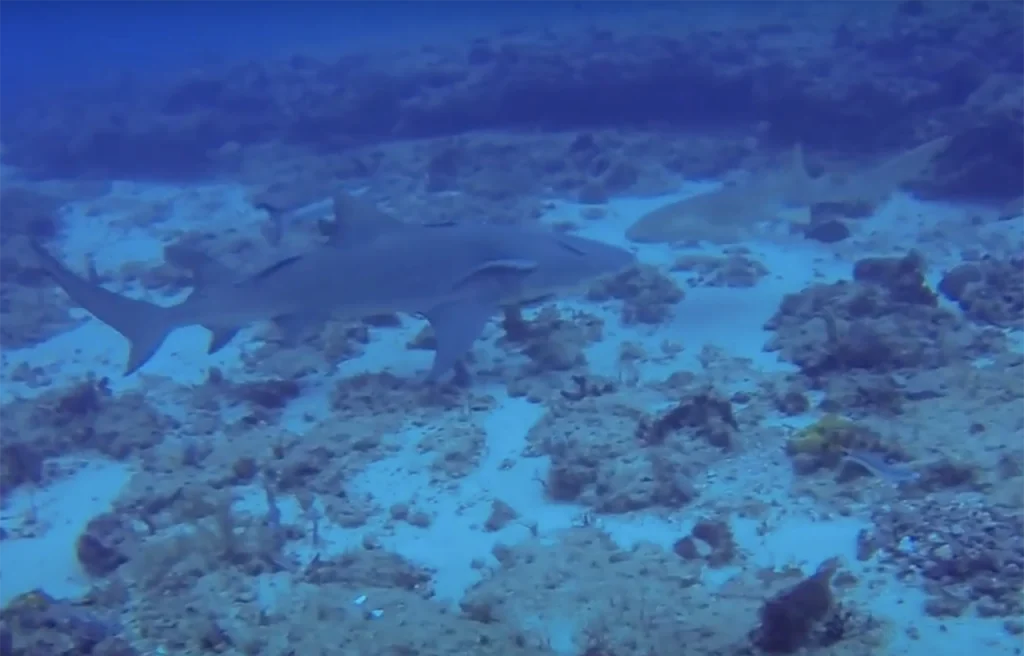
Maximizing Your Diving Experience at Area 29
Prepare for Drift Diving
Area 29 is primarily a drift dive site, so it’s crucial to be prepared for this unique diving style:
- Master SMB Use: Carry and be proficient with a surface marker buoy (SMB). This is essential for your safety and visibility to the boat crew.
- Drift Diving Skills: Ensure you’re comfortable with drift diving techniques and currents before attempting this site.
- Live Boat Diving: Familiarize yourself with live boat diving procedures, as the boats don’t anchor at the site.
Timing Your Visit
- Winter Months: Visit in January or February for a chance to see lemon sharks, which aggregate in the area during these months13.
- Visibility Considerations: Area 29 is known as “Old Reliable” for its consistently good visibility, making it an excellent choice when inshore sites have poor conditions3.
Exploring the Site
- Depth Range: Be prepared for depths between 80 to 90 feet, making it suitable for more experienced divers.
- “Aquarium” Exploration: As you drift north, look for the series of “aquariums” formed by the broken ledge structure. These mini-environments host a variety of marine life.
- Marine Life Spotting: Keep an eye out for blue, queen, French, and gray angelfish, as well as various species of grunts, squirrelfish, and goatfish.
Equipment Considerations
- Steel Tanks: Jupiter dive operators typically use 100cf steel tanks. Adjust your weights accordingly, as these are about 6 lbs heavier than aluminum 80s.
- Proper Gear: Ensure you have all necessary equipment for drift diving, including a dive computer and appropriate exposure protection.
Wildlife Encounters
- Turtle Sightings: Look for loggerhead turtles resting under ledges and hawksbill turtles feeding on sponges.
- Shark Encounters: While not guaranteed, keep an eye out for reef sharks and, during winter months, lemon sharks.
- Goliath Grouper: You might encounter these impressive fish, but approach slowly and maintain distance as they can be shy.
Capturing Memories at Area 29 in Jupiter: Photography Tips
Gear Preparation
- Streamline Your Equipment: Ensure your dive gear is streamlined to avoid drag. This will help you maintain buoyancy and stability while photographing.
- Use Proper Housing: Make sure your camera has the correct waterproof housing to prevent leaks. Familiarize yourself with its features before diving.
Timing and Lighting
- Shoot with the Sun Overhead: For optimal natural lighting, dive when the sun is directly overhead. This maximizes light penetration and color vibrancy in your images.
- Adjust Settings for Depth: Use a higher ISO (around 800) and a medium shutter speed to capture sharp images without losing light quality.
Composition Techniques
- Get Close to Your Subject: Water density can wash out colors and details, so get as close as possible to your subjects for clearer, more vibrant images.
- Anticipate Opportunities: Always be on the lookout for potential photo subjects ahead of you, especially in drift diving scenarios where you may not have time to swim back against the current.
Capturing Action
- Stay Calm Around Marine Life: Sharks and other marine creatures often sense your calmness. Allow them to approach you rather than making sudden movements.
- Positioning: If you’re at the front of the dive group, you’ll have more time to compose shots before drifting away from potential subjects.
Using Strobes Effectively
- Position Strobes High and Wide: If using strobes, position them high and wide to minimize backscatter from sandy bottoms, which is common in Jupiter dives.
- Experiment with Lighting: Use strobes to enhance colors, especially when diving deeper than 30 meters where natural light diminishes.
Post-Dive Editing
- Edit Your Photos: Utilize photo editing software like Adobe Lightroom to enhance colors, remove backscatter, and correct any imperfections in your images after the dive.
Frequently Asked Questions
When is the best time to dive Area 29 in Jupiter?
The best time to dive at Area 29 in Jupiter, Florida, is generally from January through April. This period offers several advantages for divers:
Marine Life Activity: Winter months are particularly favorable for spotting Lemon Sharks, which aggregate in the area during this time. Additionally, divers may encounter various species of turtles, including Loggerhead and Hawksbill turtles, as well as other marine life.
Visibility: Area 29 is known for its excellent visibility, especially during the winter and early spring months when water conditions are typically clearer. This makes it an ideal time for both sightseeing and underwater photography.
Consistent Conditions: During this period, Area 29 is often chosen as a dive site when inshore locations experience poor visibility, earning it the nickname “Old Reliable” due to its dependable diving conditions.
Comfortable Water Temperatures: Water temperatures during these months are generally comfortable for diving, ranging from the low to mid-70s Fahrenheit (around 23-25°C), allowing divers to enjoy longer dives without excessive thermal protection.
What is the visibility like while diving Area 29 in Jupiter?
The visibility while diving at Area 29 in Jupiter, Florida, is generally considered to be excellent.
Consistent Clarity: Area 29 is known for its good visibility, which is one of the reasons dive operators frequently choose this site, especially when inshore locations have poor conditions. It has earned the nickname “Old Reliable” for this reason.
Water Color: Divers often describe the water as a unique shade known as “Jupiter Blue,” characterized by its clarity and vibrant color, making it ideal for both sightseeing and underwater photography.
Depth Influence: The site’s depth ranges from 80 to 90 feet, and while visibility can vary based on weather and current conditions, divers typically enjoy crystal-clear waters that enhance the diving experience.
Current Effects: While visibility is generally good, it’s important to note that strong currents can occasionally stir up sediment, which may affect clarity temporarily. Divers are advised to plan dives around tide schedules to optimize visibility conditions.
How deep are the dives at Area 29 in Jupiter?
Dives at Area 29 in Jupiter, Florida, typically range from 80 to 90 feet in depth. This makes it one of the deeper dive sites in the area, offering divers a chance to explore vibrant marine life and unique underwater topography. The site is well-known for its excellent visibility and diverse ecosystems, making it a popular choice for both sightseeing and hunting opportunities.
Is Area 29 in Jupiter suitable for beginners?
Area 29 in Jupiter, Florida, is generally not recommended for beginners due to its depth and diving conditions.
Depth: The dives at Area 29 typically range from 80 to 90 feet, which can be challenging for novice divers who may not yet be comfortable with deeper dives or managing their buoyancy at such depths.
Drift Diving: The site primarily involves drift diving, requiring divers to be proficient in managing currents and maintaining awareness of their surroundings. This technique can be overwhelming for beginners who are still gaining confidence in their diving skills.
Experience Level: Many dive operators recommend that divers have at least an Open Water certification and some experience before attempting dives at Area 29. This ensures that divers are familiar with safety protocols and can handle the conditions effectively.
Guided Dives: While there are knowledgeable dive guides available, the combination of depth and drift diving means that beginners may not have the same level of control over their dive experience as they would in shallower, more controlled environments.
Is Area 29 in Jupiter suitable for advanced divers?
Area 29 in Jupiter, Florida, is suitable for advanced divers due to several key factors:
Depth and Experience Level: The dive site typically ranges from 80 to 90 feet, which aligns well with the capabilities of advanced divers. Those with certifications such as Advanced Open Water are trained to handle deeper dives and manage buoyancy effectively at these depths.
Drift Diving Conditions: Area 29 primarily involves drift diving, requiring divers to be proficient in navigating currents. This technique is often more suitable for experienced divers who can maintain control and awareness while drifting along the reef.
Diverse Marine Life: Advanced divers will appreciate the opportunity to encounter a variety of marine species, including sharks, Goliath groupers, and various tropical fish, making the dive exciting and rewarding.
Challenging Environment: The site offers unique underwater topography and conditions that provide advanced divers with opportunities to enhance their skills, such as navigation and buoyancy control in varying depths and currents.
Jupiter Dive Sites
- Area 51
- Area 29
- Tunnels
- Loggerhead Reef
- Bluffs Reef
- Bonnies
- Captain Kurls
- Spadefish Point
- Coral Cove Park
- Captain Mike’s
- Julies
- Emerald Charters Shark Dive
- Jupiter Wreck Trek
- Donut
- Scarface Reef Andrew “Red” Harris No Shoes Reef
- Jupiter Inlet
- Step Reef
- Sawfish Bay
- Marine Restoration Reef
- North County Reef
- Lighthouse
- Finz Den
- High Ledge
- Leigh’s Ledge
- Monkey’s Ledge
- Gary’s

